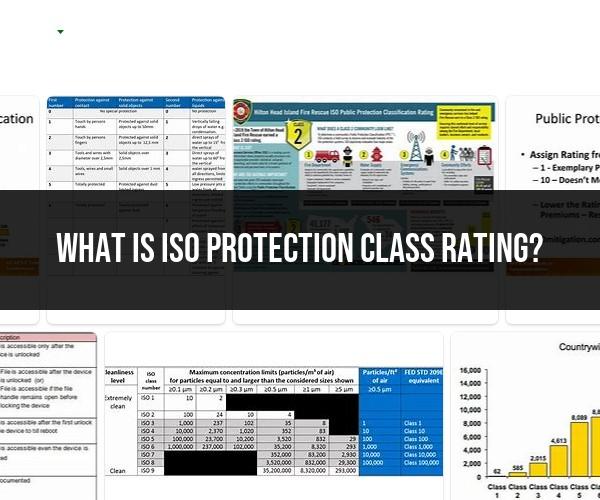What is ISO protection class rating?
ISO Protection Class Rating, also known as Fire Protection Class Rating, is a numerical grading system used by insurance companies to assess the level of fire protection available in a particular area or community. This rating is a critical factor in determining property insurance premiums for homeowners and businesses. The lower the ISO Protection Class Rating, the better the fire protection in the area, and, typically, the lower the insurance premiums.
The ISO (Insurance Services Office) evaluates communities and fire departments based on various criteria related to fire suppression capabilities. The evaluation process includes factors such as:
Fire Department:
- The availability of fire stations and their locations within the community.
- The number of firefighters, their training, and the availability of firefighting equipment.
- The effectiveness of communication systems and dispatch procedures.
Water Supply:
- The availability and reliability of the water supply, including water mains, hydrants, and water sources (such as lakes or reservoirs).
- The capacity and pressure of the water supply to support firefighting efforts.
Emergency Communication Systems:
- The efficiency and reliability of the emergency communication systems, such as 911 services.
Community Efforts:
- Community efforts related to fire prevention, fire safety education, and building code enforcement.
The ISO Protection Class Rating ranges from 1 to 10, with Class 1 representing the highest level of fire protection and Class 10 indicating that the area has little or no recognized fire protection. Generally, urban areas with a well-equipped and staffed fire department, reliable water supply, and efficient emergency communication systems tend to have lower ratings. Rural areas with limited fire protection resources often receive higher ratings.
The ISO Protection Class Rating is used by insurance companies as a risk assessment tool. Lower-rated areas are considered to have lower fire risk, leading to lower insurance premiums for properties located there. Conversely, higher-rated areas are perceived to have a higher fire risk, resulting in higher insurance premiums for properties in those locations.
It is essential for property owners to be aware of the ISO Protection Class Rating for their area and understand how it may affect their insurance costs. Homeowners can inquire with their insurance provider or local fire department to obtain information about the ISO rating for their community. Improvements in fire protection, such as the addition of fire hydrants or enhanced firefighting capabilities, can potentially lead to a lower ISO Protection Class Rating and, subsequently, reduced property insurance premiums.













